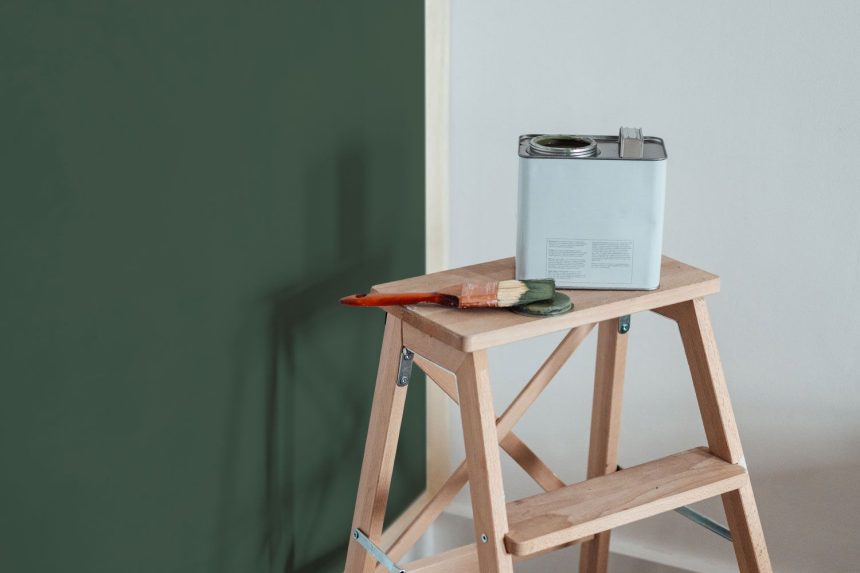While a fresh coat of paint is a low-cost, low-effort way to give your entire room a brand-new feel, seeing your carefully chosen color peel or crack after the job is finished is frustrating and discouraging.
Paint peels for a variety of reasons, from poor preparation that interferes with the paint’s adhesion to hidden issues like moisture and humidity. By identifying the cause of your peeling paint, you can fix your paint job and prevent future issues. Ahead, experts share several common reasons your paint may be peeling and tips for how to solve each issue.
- Dennis Fiorilli, senior director of Product Information and Excellence at Sherwin-Williams
- Krystal Mindeck, product director of paint, at Valspar
Reasons Your Paint Is Peeling
Paint can peel for a variety of reasons, including too much moisture, using the wrong product, and poor wall preparation.
Poor Wall Preparation
A successful paint job depends on how carefully you prepare your wall. Applying paint to a clean, smooth (but not glossy) wall is best for proper adhesion. “Before painting, it is important to follow the rule of ‘clean, dull, and dry,'” says Dennis Fiorilli, senior director of product information and excellence at Sherwin-Williams. “Clean any dirt or debris off the surface, scuff or sand the original finish to dull it down and provide a good profile, clean the dust from sanding, and allow the substrate to dry properly before applying the new paint,” he says.
Using the Wrong Type of Paint
Different paints are developed for different surfaces and environments. For example, paint can peel in a bathroom if it isn’t designed to withstand humidity. “It’s vital for any paint project to choose the correct interior or exterior paint formulated for the job for proper adhesion,” says Krystal Mindeck, product director of paint, at Valspar. “For cabinets, furniture, doors, and trim, you’ll want to choose a product formulated to provide exceptional durability. For the outdoors, it’s important to choose paints specifically created to withstand harsh weather conditions.”
Improper Priming
Primers are designed to improve your paint’s ability to stick to walls in old homes, in humid bathrooms, on repaired walls, or in other tricky areas. “There is a reason why primers exist,” says Fiorilli. “Many have special attributes designed for specific substrates, adhesion promoting, or sealing.”
Before applying primer, clean and prepare surfaces so they’re dull, smooth, and dry. “The appropriate primer provides the foundation for a top coat finish to last for years,” says Mindeck.
Expired Contaminated Paint
Contaminants in the paint can interfere with your paint’s ability to adhere. Check your paint for signs of expiration before using it. If the paint contains dirt or rust flakes from long-term storage in the can, strain it before use. Keep your paint clean by using trays instead of dipping your brush or roller into the can, and dispose of any paint left in the tray instead of returning it to the can.
Excess Moisture
Excessive moisture can prevent the paint from drying properly, causing it to peel. Sometimes the cause is straightforward, such as choosing the wrong paint product for a bathroom, resulting in peeling paint around your shower. Other times, it can indicate moisture has accumulated between the paint and the wall due to a hidden leak or overall high humidity. Proper venting in these spaces and dehumidifiers can help mitigate excessive moisture in your home.
How to Fix Peeling Paint
To fix peeling paint, identify the issue first, then ensure your substrate is prepared properly.
Find the Cause
Before fixing peeling paint, it’s important to understand why your first attempt failed. If you have a hidden moisture issue, you’ll need to repair it or risk the paint peeling again. If it’s as simple as choosing the wrong paint product, research a better option. “You will need to find the underlying cause of the peeling,” says Fiorilli.
Remove Loose Sections
To fix peeling paint, begin by removing any loose sections. “It’s always best to remove any paint that does not have good adhesion,” says Fiorilli.
Fix Wall Imperfections
Next, fill any holes and cracks with spackle. “Once the spackle has dried, sand the area with a fine-grit sandpaper until the spackled area is flush with the wall,” says Mindeck. “Caulk any gaps found in between trim and walls, which naturally occur over time.”
Clean and Dull Your Walls
To encourage proper adhesion, use fine-grit sandpaper and lightly scuff the original finish. Then clean your walls and let them dry completely. Once the walls are dry, you can try priming and painting them again. This time, the paint should adhere properly.







